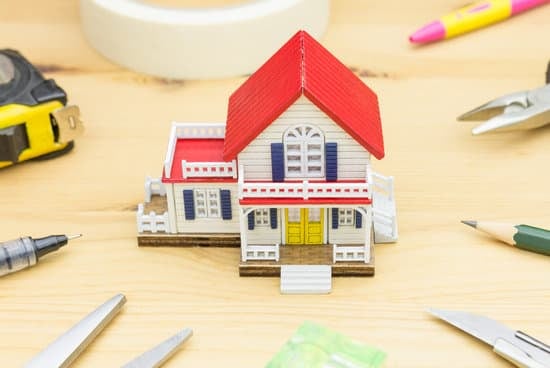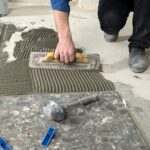Are you constantly struggling with poor cell service at home? In this blog, we will explore the essential steps you can take to improve your cell service and ensure a reliable connection within the comfort of your own home. Ensuring good cell service is crucial for staying connected with friends, family, and work, and this guide will equip you with the knowledge and tools necessary to do so.
Assessing the current state of your cell service is the first step in improving it. Identifying weak signals and dead zones in your home will help you understand the extent of the issue and determine the best course of action to resolve it. Factors affecting cell service such as distance from cell towers, building materials, and terrain also play a significant role in determining signal strength.
In this comprehensive guide, we will cover various tips for improving cell service at home, including utilizing Wi-Fi calling, signal boosters, and femtocells. We will also discuss ways to optimize your home for better cell service by positioning devices strategically, clearing obstructions, and using external antennas. With our practical advice and solutions, you will be able to achieve better cell service in no time.
Assessing the Current Cell Service
When it comes to improving cell service at your home, the first step is to assess the current situation. This involves identifying areas with weak signals and dead zones where you may experience dropped calls or slow data speeds. Understanding the extent of the problem will help you determine the most effective solutions to improve your cell service.
One way to assess your current cell service is by checking the signal strength on your mobile device. Most smartphones have a feature that allows you to see how many bars of signal you are receiving at any given time. You can walk around different areas of your home and take note of where the signal strength is strongest and weakest.
In addition to checking signal strength on your phone, there are also apps available that can provide more detailed information about the quality of your cell service. These apps can show you specific numerical values for signal strength, as well as other important metrics like signal latency and download/upload speeds. By using these apps, you can get a better understanding of where exactly the weak spots in your home are located.
Dead zones are areas in your home where there is little to no cell signal at all. These areas can be particularly frustrating, especially if they are in commonly used areas such as the living room or bedroom. Identifying these dead zones will be crucial in determining what measures need to be taken to improve cell service throughout your entire home.
Understanding the Factors Affecting Cell Service
When it comes to improving cell service at your home, understanding the factors that affect signal strength is crucial. One of the most significant factors is the distance between your home and the nearest cell tower. The farther you are from a cell tower, the weaker your signal may be.
This can result in dropped calls, slow data speeds, and poor call quality. Checking the location of nearby cell towers and their respective coverage areas can help you understand how your distance from these towers may be impacting your cell service.
In addition to distance from cell towers, building materials can also have a significant impact on cell service. Materials such as metal, concrete, and energy-efficient glass can interfere with cellular signals, leading to weak or spotty coverage inside buildings. If you often experience poor cell service indoors, it may be useful to consider the construction materials used in your home and how they might be affecting your ability to connect to cellular networks.
Furthermore, terrain can also play a role in determining the quality of cell service at your home. For example, if your home is located in a valley or surrounded by tall buildings or thick vegetation, it could obstruct cellular signals and create dead zones within your property. Understanding how these terrain features may impact your cell service can help you take proactive steps to address any signal issues.
Table: Factors Affecting Cell Service
| Factor | Impact |
|---|---|
| Distance from Cell Towers | Weaker signal with greater distance |
| Building Materials | Potential interference with cellular signals |
| Terrain | Possible obstruction of signals in certain geographic areas |
By considering these factors affecting cell service at home, you can begin to identify potential reasons for weak or unreliable signal strength. This understanding will inform the strategies you choose to optimize and improve cell service within your residential space.
Tips for Improving Cell Service
Having reliable cell service at home is crucial for staying connected, especially in today’s digital age. However, many people experience weak signals and dead zones within their homes, leading to dropped calls and poor data connections. It’s essential to understand the various factors affecting cell service and how to improve it effectively.
One effective way to improve cell service at home is by utilizing Wi-Fi calling. This feature allows you to make and receive calls over your Wi-Fi network instead of relying solely on the cellular network. Many smartphones have this capability, and enabling it can significantly enhance call quality and signal strength, especially in areas with poor cellular coverage.
Another option for improving cell service at home is using signal boosters or amplifiers. These devices work by capturing existing cellular signals outside the home, amplifying them, and then rebroadcasting the enhanced signals inside the house. Signal boosters are particularly useful in areas where the outdoor signal is weak due to distance from cell towers or building materials interfering with the signal.
For those struggling with poor cell service at home, femtocells can be a game-changer. A femtocell, also known as a microcell or network extender, essentially creates a small cellular base station within your home. It connects to your internet connection and provides a strong cellular signal for voice calls and data usage within its range. This can be a powerful solution for improving cell service in dead zones or areas with limited coverage.
By understanding these tips for improving cell service at home – such as using Wi-Fi calling, signal boosters, and femtocells – individuals can take proactive steps towards ensuring reliable connectivity within their living spaces. Whether it’s making important phone calls or accessing high-speed internet on mobile devices, implementing these solutions can make a significant difference in overall connectivity and communication within the home environment.
Optimizing Your Home for Better Cell Service
Improving cell service at your home is essential in today’s digital age. Whether you rely on your cell phone for work, staying connected with loved ones, or accessing important information, a strong cell signal can make a significant difference in your daily life. Optimizing your home for better cell service involves understanding the factors that affect signal strength and implementing practical solutions to enhance connectivity.
Here are some tips on how to improve cell service at your home:
- Positioning Devices: Place your router and cell phone in central locations within your home to ensure a more reliable connection. Avoid placing them near thick walls or metal objects that may interfere with the signal.
- Clearing Obstructions: Remove any obstructions such as furniture or electronic devices that could block the signal from reaching certain areas of your home. Keep the space around your router and cell phone clear to allow for better transmission.
- Using External Antennas: Consider installing an external antenna for your router to boost its signal strength. These antennas can be positioned outside the house or in an elevated area to capture better reception from nearby cell towers.
By following these simple steps, you can significantly enhance the cell service at your home and enjoy uninterrupted connectivity for all your digital needs. Experiment with different positioning and antenna options to find the best solution that works for your specific living situation.
Remember, maintaining a strong and reliable cell signal at home can greatly improve communication, productivity, and overall quality of life.
Choosing the Right Cellular Provider and Plan
When it comes to improving cell service at your home, one of the most important factors to consider is choosing the right cellular provider and plan. Before making any decisions, it’s essential to research coverage maps and signal strength in your area. Here are some tips for finding the best cellular provider and plan for you:
- Research Coverage Maps: Start by looking at coverage maps provided by different cellular providers. These maps will give you an idea of their network coverage in your area. Look for providers with strong coverage in the specific areas where you need reliable cell service, such as your home and workplace.
- Check Signal Strength: In addition to looking at coverage maps, it’s important to check signal strength in your area. You can use apps or features on your smartphone that allow you to check signal strength and network quality. This will give you a more accurate understanding of which providers have the best signal in your neighborhood.
- Consider Customer Feedback: Reading reviews and feedback from customers in your area can also provide valuable insights into the quality of service offered by different cellular providers. Look for feedback on call quality, data speeds, and overall reliability of the network.
Choosing the right cellular provider and plan is crucial for improving cell service at your home. By researching coverage maps, checking signal strength, and considering customer feedback, you can make an informed decision that ensures reliable cell service in your area.
Troubleshooting Common Cell Service Issues
Addressing Interference
Interference from other electronic devices, such as microwaves, baby monitors, and Bluetooth devices, can disrupt the cell signal in your home. To improve cell service, try to keep these devices away from your phone or router. Additionally, consider using shielded cables for your electronic equipment to reduce interference.
Dealing With Network Congestion
Network congestion can lead to slow data speeds and dropped calls. One way to address this issue is by using Wi-Fi calling when possible. This feature allows you to make and receive calls over a Wi-Fi network instead of relying solely on cellular towers. Another option is to switch to a cellular provider that offers better coverage and less congestion in your area.
Tackling Hardware Problems
Sometimes, the issue with poor cell service at home may stem from faulty hardware such as an outdated modem or router. Ensure that your home networking equipment is up-to-date and compatible with the latest cellular technology. Consider investing in a signal booster or femtocell to improve reception within your property. If you continue experiencing problems despite these efforts, it may be beneficial to contact your cellular provider for further assistance.
By addressing interference, network congestion, and hardware problems, you can significantly improve cell service at your home and enjoy reliable connectivity for calls, texts, and internet browsing.
Future-Proofing Your Home for Better Cell Service
In conclusion, ensuring reliable cell service at home is crucial in today’s interconnected world. With the increasing reliance on mobile devices for communication, work, and entertainment, having a strong cellular signal within the comfort of one’s own home is essential. Understanding the factors affecting cell service, assessing current signal strength, and implementing practical tips for improvement are all important steps in optimizing cellular connectivity.
As technology continues to advance, it is also important to future-proof your home for better cell service. Keeping up with technological advancements and upgrades in the industry can help ensure that your home remains well-equipped to handle the demands of evolving cellular networks. This may involve considering options like 5G compatibility, emerging signal boosting technologies, and staying knowledgeable about improvements in hardware and network infrastructure.
Ultimately, by taking proactive measures to improve cell service at home, individuals can enjoy clearer calls, faster data speeds, and seamless connectivity throughout their living spaces. Whether it be through utilizing Wi-Fi calling, investing in a signal booster or femtocell, optimizing device positioning and using external antennas, or selecting the right cellular provider and plan based on coverage maps and signal strength – there are various strategies that can be employed to enhance cell service at home.
By following these guidelines and staying informed about advancements in the field, individuals can effectively address common challenges related to weak signals and dead zones while keeping their homes well-prepared for future developments in cellular technology.
Frequently Asked Questions
How Can I Make My Cell Signal Stronger at Home?
You can make your cell signal stronger at home by first checking if your phone is compatible with Wi-Fi calling. Another way is to use a signal booster or femtocell to enhance the signal within your home.
How Can I Boost My Mobile Signal Strength at Home for Free?
To boost your mobile signal strength at home for free, you can try moving closer to a window or higher floor in your house, as this can help improve reception. Additionally, keeping your phone charged and updated can also contribute to a stronger signal.
Why Is My Cell Service So Bad in My House?
The reason why your cell service may be bad in your house could be due to various factors such as the distance from the nearest cell tower, obstructions like buildings or trees blocking the signal, or even the construction materials of your home interfering with the signal.

I’m thrilled to have you here as a part of the Remodeling Top community. This is where my journey as an architect and remodeling enthusiast intersects with your passion for transforming houses into dream homes.





